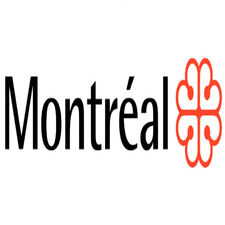Housing
Type of resources
Available actions
Topics
Keywords
Contact for the resource
Provided by
Years
Formats
Representation types
Update frequencies
status
Service types
-

The data represents the result of preventive inspections carried out by the Housing Department. Data includes: the physical condition of the inspected parts of the building on a scale of 1 (excellent) to 6 (very poor), whether or not the building was transferred for a complete inspection, and whether or not a statement of violation was served without notice. The period from January 1 to June 1, 2024 served as a pilot project during which several processes were tested and optimized.**This third party metadata element was translated using an automated translation tool (Amazon Translate).**
-

This data set contains information on inspections carried out by the Health Division of the Housing Department (formerly the Land Development Department). The City of Montreal, through its [Regulation Respecting Health, Maintenance and Security of Housing (R.V.M. 03-096)] (https://montreal.ca/reglements-municipaux/recherche/60d7656afd6531443f578d96), ensures the health, good maintenance and security of housing and residential buildings on its territory. By healthiness, we mean all the conditions that make a home suitable for housing. To learn more about the efforts made by the City of Montreal in terms of housing health, consult the [Action Plan for decent housing conditions 2018-2021] (https://montreal.ca/sujets/salubrite-entretien-et-securite-des-logements). **Note: ** This package only concerns inspections carried out by the Health Division of the Housing Department, and not those carried out by district staff. The inspection data does not present a portrait of unsanitary conditions or a diagnosis of the condition of the rental housing stock, but rather the work done by the team.**This third party metadata element was translated using an automated translation tool (Amazon Translate).**
-

Under the By-law for a mixed metropolis, anyone who carries out a residential project of more than 450 m² (equivalent to approximately 5 units) must enter into an agreement with the City in order to contribute to the offer of social, affordable and family housing. For more information on the regulation and for the definitions of the types of housing (social, affordable and family), please refer to [the City of Montreal's site] (https://montreal.ca/articles/metropole-mixte-les-grandes-lignes-du-reglement-7816).**This third party metadata element was translated using an automated translation tool (Amazon Translate).**
-

Geospatial vector data for the division of properties in the agglomeration of Montreal containing general information on property assessment units, including the codification of use (CUBF), approximate dimensions and registration number. IMPORTANT: This division has no legal value and should not be confused with cadastral division.**This third party metadata element was translated using an automated translation tool (Amazon Translate).**
-

List of projects and/or buildings associated with social housing. Inventory built from various data sources of varying quality in the early 2000s and maintained since then on an annual basis. Data used to better understand the supply of social and community housing in the territory. The data is categorized by type of project, namely: - HLM: Public housing managed by the Office municipal d'habitation de Montréal, whose rent is fixed at 25% of household income. This category includes the Corporation des Habitations Jeanne-Mance. - OMHM: Affordable public housing resulting from projects by the Office municipal d'habitation de Montréal outside the HLM program and managed in a form similar to NPOs with the participation of residents. - SHDM: public and affordable rental housing belonging to the Société d'habitation et de développement de Montréal and whose projects may be managed by an NPO. - NPO: Rental housing owned and managed by a non-profit organization and aimed at customers who have difficulty finding adequate housing. NPOs sometimes offer community support to their tenants. - Coop: Homes belonging to a cooperative that rent them to its members. Cooperatives aim to offer quality housing at affordable prices while promoting socio-economic diversity in projects. More information on the subject is available on [the City of Montreal's website] (https://montreal.ca/articles/repartition-des-logements-sociaux-et-communautaires-17858). **This third party metadata element was translated using an automated translation tool (Amazon Translate).**
-
The Community Well-Being (CWB) Index is a method of assessing socio-economic well-being in Canadian communities. Various indicators of socio-economic well-being, including education, labour force activity, income and housing, are derived from Statistics Canada's Census of Population and combined to give each community a well-being ""score"". These scores are used to compare well-being across First Nations and Inuit communities with well-being in other Canadian communities. Indicator values may be missing for a community because of non-participation in the census, inadequate data quality, or insufficient population size. For more information on the subject, visit http://www.aadnc-aandc.gc.ca/eng/1100100016579/1100100016580.
-

The Community Well-Being (CWB) Index is a method of assessing socio-economic well-being in Canadian communities. Various indicators of socio-economic well-being, including education, labour force activity, income and housing, are derived from Statistics Canada's Census of Population and combined to give each community a well-being "score". These scores are used to compare well-being across First Nations and Inuit communities with well-being in other Canadian communities. Indicator values may be missing for a community because of non-participation in the census, inadequate data quality, or insufficient population size. For more information on the subject, visit https://www.sac-isc.gc.ca/eng/1100100016579.
-

The Indigenous Community Infrastructure dataset depicts infrastructure projects across Canada that are supported by Indigenous Services Canada (ISC) targeted infrastructure funding. It contains data related to project category, description, status, departmental investment and community. The dataset allows the Department to pinpoint and share information about individual infrastructure projects in Indigenous communities, in a proactive and transparent manner, to: • Showcase where and how investments are carried out • Demonstrate the Government’s commitment to address socio-economic gaps between Indigenous and non-Indigenous communities in Canada and improve access to high-quality services Projects featured in this Indigenous Community Infrastructure dataset are updated on a quarterly basis. Because some projects will benefit more than one community, the number of projects does not match the number of markers on the map or of entries in the dataset. For more information, visit https://www.sac-isc.gc.ca/eng/1526995988708/1526996020578.
 Arctic SDI catalogue
Arctic SDI catalogue